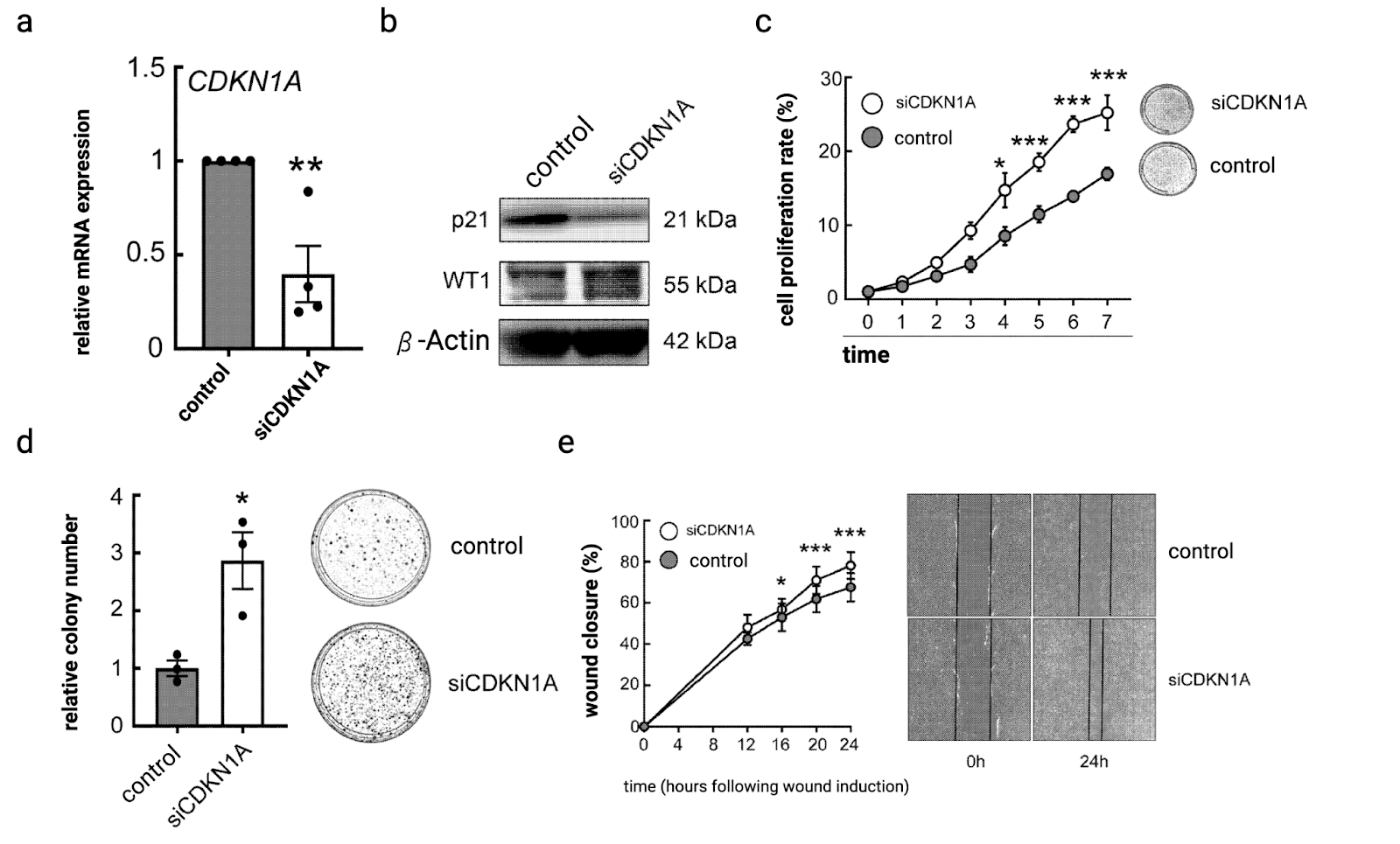Never miss an update from Kyoto University
Create your free account to connect with Kyoto University and thousands of other innovative organizations and professionals worldwide
Cardiovascular diseases are the number one killer worldwide. The human heart cannot regenerate, so regenerative therapeutic approaches need to be developed urgently. The wall of the heart is composed of three layers: epicardium, myocardium, and endocardium. The epicardium is the external protective layer that supports cardiac repair, i.e. reactivates upon injury to form a cardiac scar and is thus investigated as a therapeutic target tissue. Professor Yoshinori Yosida’s team is working on understanding the fundamental biology of epicardium to find pathways involved in epicardium reactivation. Their efforts led to the discovery of p21 inhibition as a way to promote epicardium regeneration.
Professor Yoshida’s team discovered that the inhibition of p21, a protein regulating the cell cycle also known ascyclin-dependent kinase inhibitor 1 (CDKN1A), promotes the regenerative ability of epicardial cells. The researchers designed a siRNA sequence targeting the CDKN1A gene to inhibit its expression. They showed that CDKN1A inhibition resulted in increased proliferation of human epicardial cells and expression of regeneration-related genes suggesting its therapeutic potential for the heart.
To assess the efficacy of CDKN1A inhibitor,Professor Yoshida’s team used human epicardial cells differentiated from iPSC cells as described inJunghof et al. 2022. Following the siRNA transfection, the researchers confirmed decreased expression of CDKN1A mRNA using RT-PCR (Fig.1a) and of the protein using Western blot (Fig.1b). Next, a significant increase in the proliferative capacity and viability of the epicardial cells was observed (Fig.1c,d). Finally, CDKN1A inhibition improved wound healing (Fig.1e) and decreased the expression of quiescence-associated genes.

Figure 1. Effects ofsiRNACDKN1A inhibition on hiPSC-derived epicardial (hiPSC-EPI) cells. a) Expression change of CDKN1A in cells treated with siRNA relative to control measured by RT-qPCR b) Western blots probed with antibodies against p21, WT1, and b-actin in hiPSC-EPI cells c) Cell growth curve assay of hiPSC-EPI cells d) Colony formation assay of hiPSC-EPI cells e) Wound healing assay assessing the migratory capacity of the cells showing the wound closure (%) after 24 hours of scratching a confluent cellular monolayer.
In addition toin vitro studies, the researchers performedex vivo explant assay of CDKN1A knockout mice. Compared to controls, epicardial explants obtained from CDKN1A knockout mice showed faster growth rates and almost twice the explant length, suggesting a higher regenerative potential. Therefore, the researchers believe that inhibiting either the mRNA expression or the protein level of CDKN1A can enhance the regenerative capacity of theepicardium. The former could be achieved by delivering siRNA, shRNA, or CRISPR-Cas system using viral vectors, while antibodies or p21-binding compounds such asflavopiridol could be used to achieve the latter. Professor Yoshida’s team is looking for biotech or pharmaceutical companies to develop therapeutics based on their discovery.
Intellectual property status
Granted Patent
Patent number: WO/2023/210713
Current development status
Experimental technologies
Desired business relationship
Patent licensing
Kyoto University was founded in 1897, the second university to be established in Japan. Kyoto University is among 10 National Designated Universities in Japan. It boasts 18 graduate schools, 10 faculties, 12 research institutes, and 26 centers and other establishments. Research conducted at Kyoto University spans the full spectrum of fields from social to natural science.
The outstanding research conducted at Kyoto University gives birth to useful technologies that could greatly benefit society. IAC (Office of Institutional Advancement and Communications) was established at Kyoto University to bridge the gap between researchers and industry. We facilitate joint research, technology transfer, creation of university startups, and provide entrepreneurial education. We are building a strong network of global industry partners to make sure basic research reaches the market.
Create your free account to connect with Kyoto University and thousands of other innovative organizations and professionals worldwide
Send a request for information
to Kyoto University
Technology Offers on Innoget are directly posted
and managed by its members as well as evaluation of requests for information. Innoget is the trusted open innovation and science network aimed at directly connect industry needs with professionals online.
Need help requesting additional information or have questions regarding this Technology Offer?
Contact Innoget support